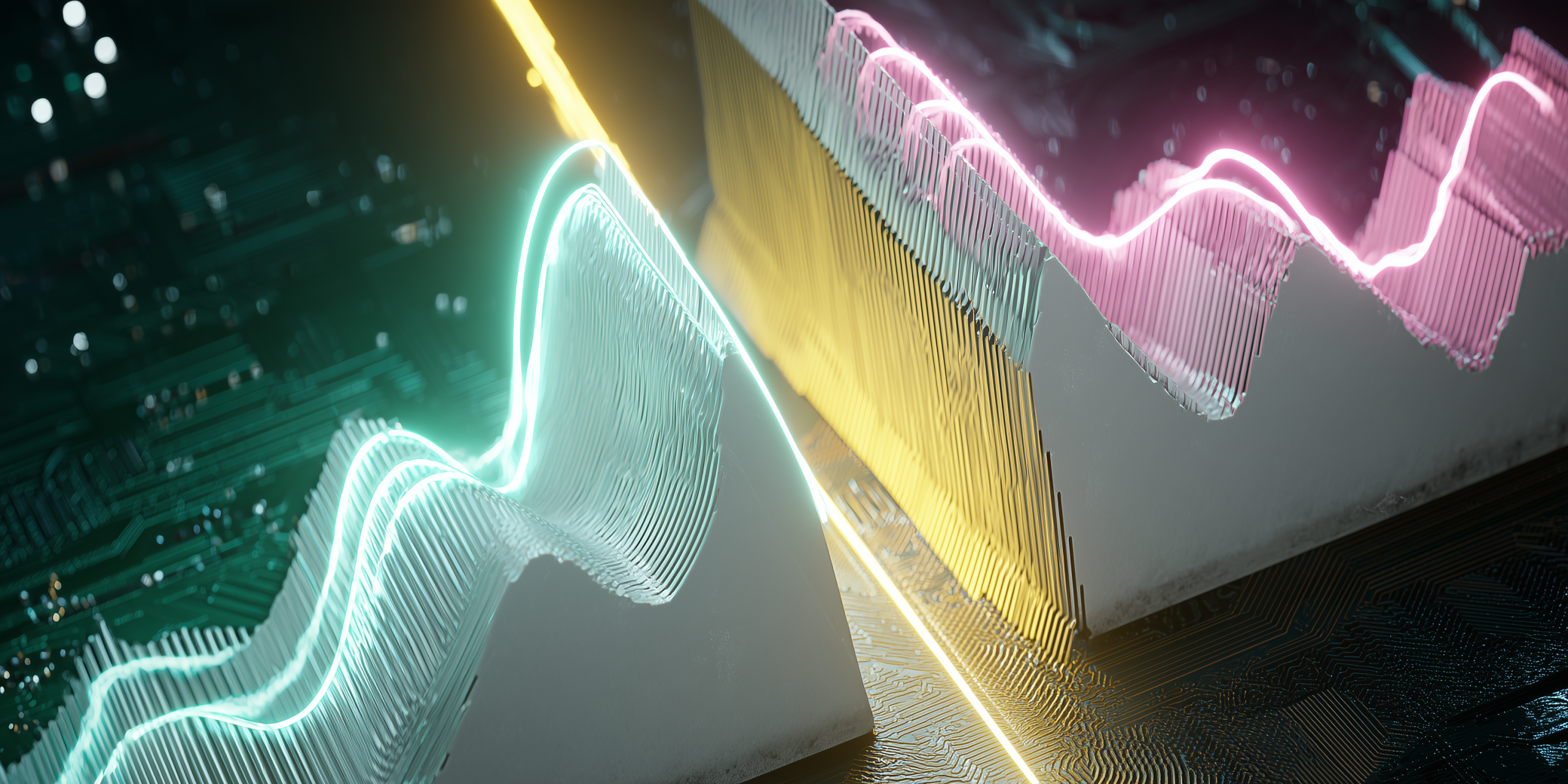The classic pump, reinvented
You already know the classic trick: you put a compressor on your bassline, feed the kick drum into its sidechain input, and voila—every time the kick hits, the bass "ducks" out of the way. This creates that signature "pumping" effect that gives electronic music its rhythmic energy. But what if we told you that sidechaining is one of the most versatile and creative tools in your arsenal, capable of much more than just a clean low-end?
This article is your guide to thinking outside the box with sidechaining. We'll explore unconventional ways to use this technique to add movement, rhythm, and dynamic interest to your tracks. Forget just the kick and bass; we’re going to apply this power to vocals, synths, effects, and more. Ready to discover the true creative potential of this essential tool?
Day 1: The rhythmic synth pad
The "pumping" effect of a sidechain isn't just for bass. Applying it to a pad can make a static, boring chord sound incredibly rhythmic and alive.
Your mission:
- Set up the classic: Take a simple, sustained synth pad. Route your kick drum to its sidechain input. Use a compressor with a fast attack and a fast release. Listen to the classic pumping effect.
- Use a rhythmic trigger: Now, instead of the kick, use a different sound to trigger the sidechain. Try a shaker loop, a hi-hat pattern, or even a short percussion hit. Listen to how the pad's rhythm now follows the new, more intricate pattern.
- Automate the effect: Automate the compressor's dry/wet knob or the sidechain's amount to gradually introduce the effect during a build-up. This adds tension and makes the sound feel like it's growing in intensity.
Why this matters: This technique turns a static sound into a rhythmic element, giving your track more energy and a sense of constant motion.
Day 2: Dynamic vocals
Vocals are often the centerpiece of a track, but sometimes they can feel a little flat. Sidechaining them can add a subtle, rhythmic "breathing" effect that makes them sit better in the mix.
Your mission:
- Sidechain to a shaker: Take a vocal track. Use a shaker or a subtle percussion loop to trigger the sidechain compressor. Use a light compression ratio and a short release. Listen carefully: does the vocal now feel like it's pulsing in time with the rhythm?
- Sidechain to the snare: Take a vocal track and sidechain it to the snare drum. Use a very fast attack and release. This creates a quick dip in the vocal's volume right when the snare hits, helping the snare cut through the mix without needing to turn it up.
- The "reverse sidechain" challenge: Create a sustained synth sound. Sidechain it to the vocal. Now, every time the vocalist sings, the synth's volume will dip. This creates a clean space for the vocal and a cool, dynamic rhythmic effect on the synth.
Why this matters: Sidechaining is a powerful tool for mix dynamics, helping elements find their own space in a busy mix.
Day 3: Creative effects and transitions
Sidechaining isn't just for volume; it can be used on effects like delay and reverb to create complex, rhythmic textures and transitions.
Your mission:
- Rhythmic reverb: Put a compressor on your reverb return channel. Sidechain it to a drum element, like a clap. Now, the reverb will only be audible in the space between the claps, creating a cool, rhythmic "gate" effect.
- Sidechained delay: Put a compressor on a delay return channel. Sidechain it to the main sound (e.g., a synth). The delay will now only appear when the synth's volume drops, making the delay echoes much clearer and more impactful.
- The "sidechain riser" challenge: Create a white noise riser. Sidechain a compressor on the riser to a repeating, fast-paced drum loop (e.g., 16th-note hi-hats). As the build-up progresses, increase the sidechain's amount. The riser will now pulsate in time with the drums, adding a huge amount of rhythmic tension.
Why this matters: Using sidechaining on effects adds movement and sophistication, turning a simple effect into a powerful creative tool.
Day 4: Finding your own creative uses
The possibilities are endless. The key is to start thinking of your sidechain as a rhythmic modulation tool, not just a fix for low-end clashes.
Your mission (ongoing):
- Experiment with triggers: What happens if you sidechain a synth pad to a vocal sample? Or a bassline to a guitar strum? The most unique ideas often come from unexpected combinations.
- Try different tools: Sidechaining isn't just for compressors. Many EQs, gates, and even effects plugins have sidechain inputs. An EQ with a sidechain input can create a rhythmic filter sweep, for example.
- Analyze your favorite tracks: Listen to tracks you love. Can you identify any creative sidechaining? A synth that pulses with a vocal? A reverb that disappears rhythmically?
Why this matters: The most unique sounds and creative arrangements come from experimentation. Don't be afraid to try combinations that seem strange at first.
Your new secret weapon
Sidechaining is a foundational technique, but its true power lies in its creative application. By moving beyond the classic kick and bass and applying this tool to different elements and effects, you'll open up a world of rhythmic possibilities. Start thinking of your tracks not just in terms of sound, but in terms of dynamic conversations between those sounds. This is where your music truly comes alive.
